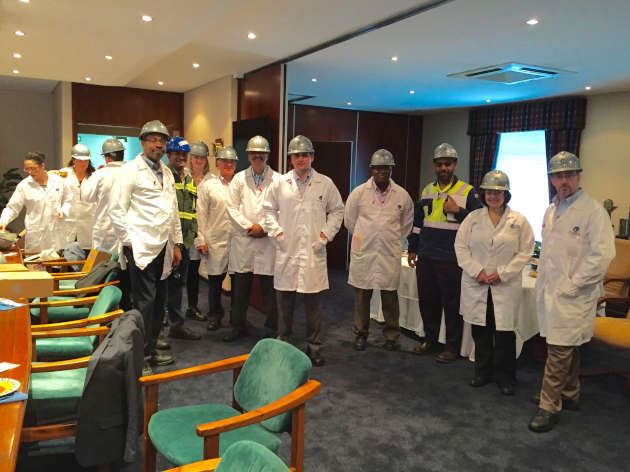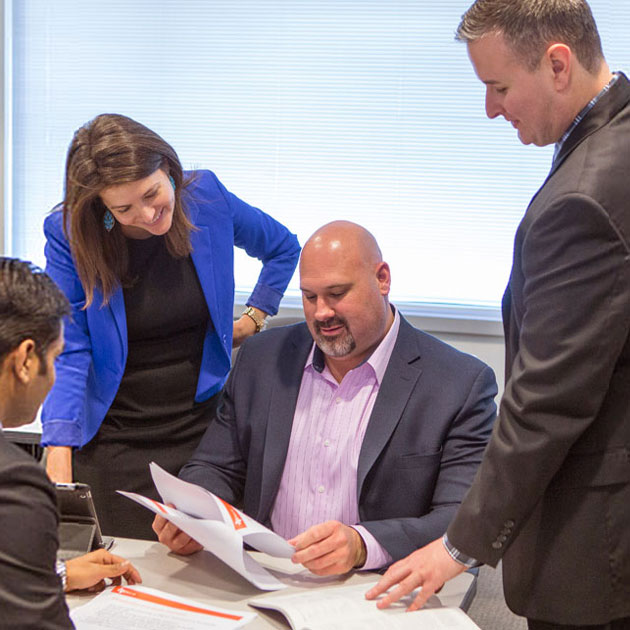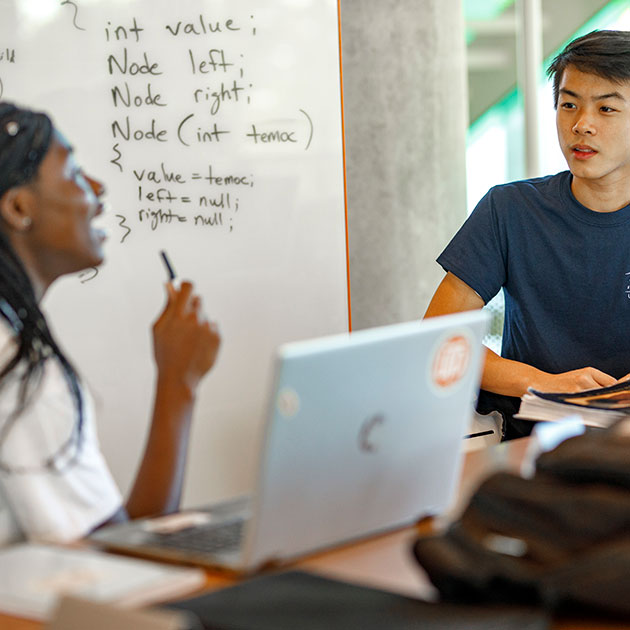
Tuesday, April 5th, we visited Hulamin, an aluminum manufacturing company. It specializes in “rolled aluminum,” which is used in products such as the aluminum foil we use for cooking, the materials soda cans are made of and other flat-sheet material that is used to manufacture other finished goods. Hulamin does not make the final product in most cases but provides the materials in a state where the end manufacturer or user only has to cut or shape the material to its specifications.
Touring Hulamin Aluminum
Our day started with a comprehensive safety briefing and issuance of safety gear, which included a hard hat, safety goggles, overcoat (like a lab coat) and steel-toed boots. Once we were dressed appropriately, we were shuttled to the main manufacturing area about a mile from the office complex. It was a damp and drizzly day, so we spent little time outside. We were split into three groups due to space constraints, and each group headed off with its guide. Paul, who is in charge of the entire plant operations, led our group. He was very informative, and it was clear he was someone of authority.
Driving up to the manufacturing area, we saw several large ingots of aluminum. Each ingot was about 20 feet long, 2 feet high and 4 feet wide. They were massive, and Paul informed us that each ingot weighed 30 tons. After parking, we left the van and entered a large building where the “hot roll” press was in operation. Here the 30-ton ingots were “pressed and rolled” by giant rollers under high heat and hydraulic pressure to reduce the thickness of the material. We watched as one ingot was transformed to a sheet 300 feet long by 8 feet wide by 6 inches thick. The material passed through the rollers, and each time it became thinner, wider and longer. Once the final dimensions were achieved, the sheets were cut to 20 feet long again and set aside.
Next, we went to the “cold rolling” area, where the previous 20-foot sheets were rolled again, this time only under pressure with no heat. Paul explained that the heating process would not allow the material to be pressed very thin as heat causes the material to become too soft. Here we saw aluminum foil being made. Each roll of foil they produce is 400 miles long. These giant rolls are sent to the different end manufacturers, who cut them into the different lengths and widths for final consumer sale.
We then went outside briefly as the there was a break in the weather and were shown where the raw and scrap aluminum were brought in. Hulamin buys scrap aluminum cans and recycles the material as well as buying raw ingots (they look like giant fishing-line weights that weigh about 300 pounds each) to process. Here we saw the smelting operation where giant furnaces melt the material to produce the 30-ton ingots. The 30-ton ingots are made like ice-cream bars. There is a pit in the ground 50 feet deep that the molten aluminum is poured into and then allowed to cool.
Walking through the rest of the plant, we got a great perspective on the size and scale of the manufacturing operations. There were several areas where we stopped and chatted about specific details of plant operations. Once the tour was complete, we loaded into the shuttles again and headed back to the offices for lunch and wrap-up discussions.
During a snack lunch, Hulamin CEO Richard Jacob and CFO David Austin discussed pricing, product mix, local economic issues, world economic issues and the respective effects on Hulamin as a company. We discussed Eliyahu M. Goldratt and Jeff Cox’s book The Goal: A Process of Ongoing Improvement (Great Barrington, Mass.: North River Press Publishing Co., 30th anniversary edition, 2014), and they were very impressed that we knew of and had read the book. Discussions then turned to details of product pricing and issues they face with currency risk, and the evaluation of the rand. It was rewarding to listen and connect the materials we had learned in our classes so far.
Read the second post about the EMBA Class of 2016 international study tour to South Africa: EMBA Class of 2016 Tour of the Port of Durban.






